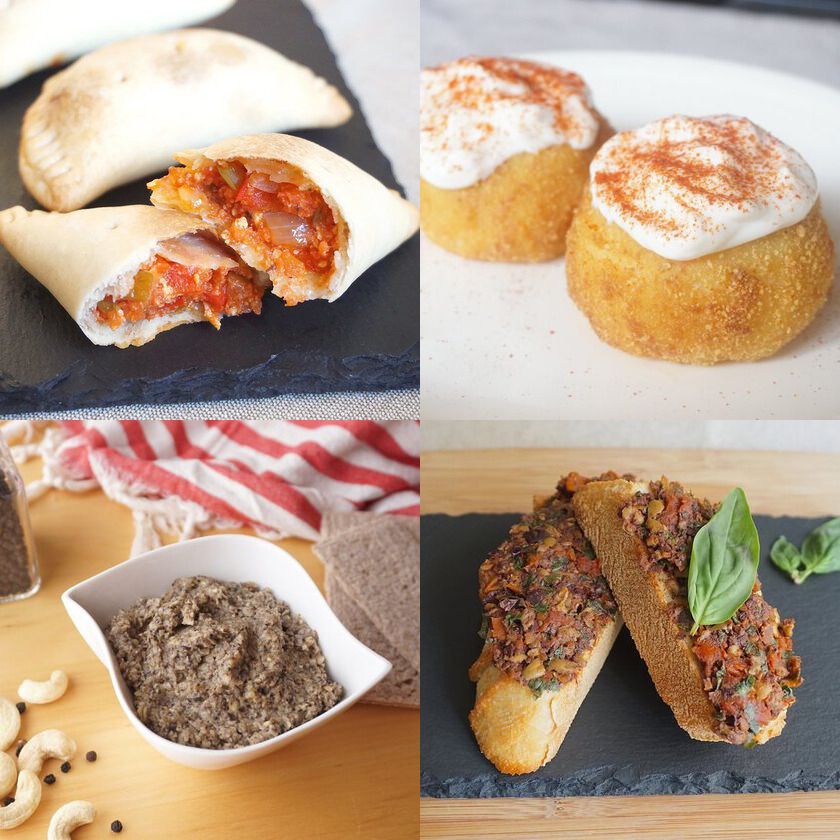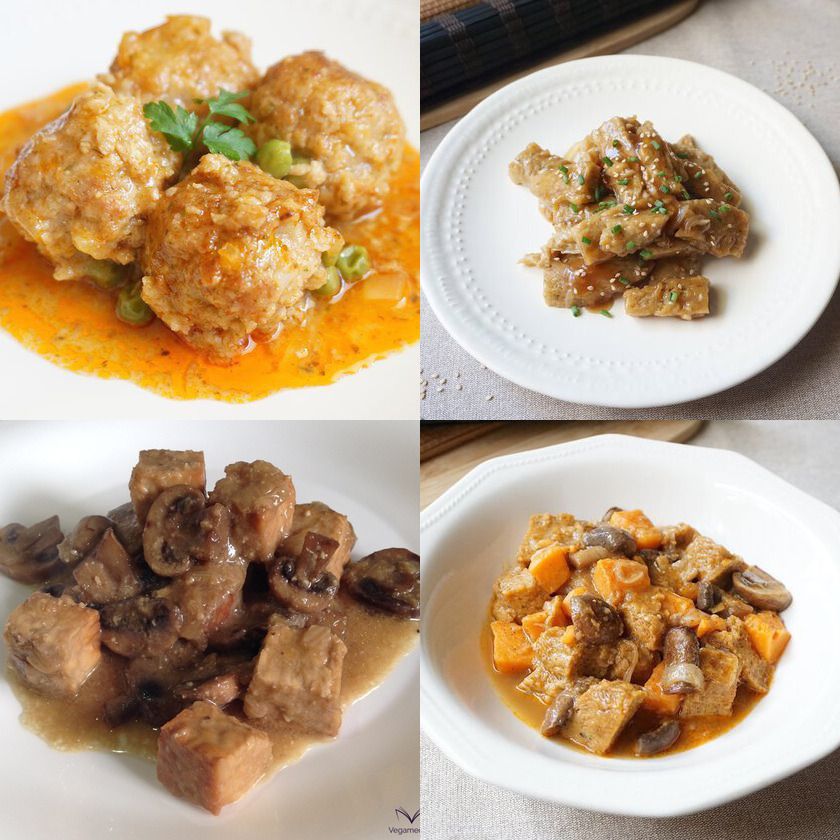
As we already told you in the recipes of Vegan St John's cake filled with orange cream and cherries in syrup and Vegan St John's cake filled with vegan truffle , this sweet is the traditional dessert of the St John's eve, which consumes especially in Catalonia, Valencia and the Balearic Islands during the festival, although in some regions of Aragon it also has a great role.
The St John's eve (night of June 23) is a festival of pagan origin in which tribute was paid to the sun celebrating the shortest night, during the summer solstice (June 21). To do so, bonfires were lit which, it was believed, purified and brought luck, and allowed to maintain the clarity of the day until the next morning, in the night with fewer hours of darkness.
On this special night we continue to celebrate today's festivals, where from the 60's of the XIX century this sweet is consumed so tender that, although in its beginnings it was made in round shape to simulate the sun, with the passage Time began to be made with an oval shape, conferring standard measures twice as long as wide, in order to capture the existing ratio between day and night of this unique moment of the year.
Below you can see what ingredients you need and the steps to follow in order to make the most precious sweet of St John's eve.
| Difficulty level | Preparation time | Rations |
| Medium | 1 h. y 30 m. | For 10 servings |
* Plus 2 hours and 20 minutes of rest
Ingredients
- 300 gr. strength flour
- 25 gr. fresh yeast
- 60 gr. whole cane sugar
- 50 ml. water (tibia)
- 50 ml. extra virgin olive oil (Smooth flavor)
- 3 tablespoons aquafaba
- 15 ml. lemon juice
- 1/2 teaspoon salt
- skin zest of 1 lemon
- 1 teaspoon orange blossom water
To decorate
- 230 gr. classic vegan pastry cream
- candied cherries
- pinion
- whole cane sugar
Instructions
- In a small cup or bowl, put the warm water with fresh yeast, stir to make it well and reserve.
- In another bowl, take the aquafaba and, with a blender of rods, beat until it is frothy. Then add the sugar and continue beating until you get a consistent and thick mixture.
- In a large bowl, sift the flour, add the salt and mix well so that the result is more spongy.
- We make a hole in the middle of the flour, we toss the dissolved yeast and we are throwing the flour of around towards the center until covering the yeast completely. When the yeast is covered, knead until obtaining a homogeneous mixture.
- Add the aquafaba with the sugar and stir well, with enveloping movements until we find it difficult to continue kneading. Next we add the oil, the juice and the lemon zest and the orange blossom and we knead again so that all the ingredients are mixed well.
- We put a little flour on a smooth surface and pass the dough to work kneading for 10 minutes, until we see that it does not get caught in the hands.
- Once kneaded, make a ball and leave it in the bowl again covered with a cloth for 20 minutes.
- After this time, we will shape the dough, for which we will take a piece of baking paper and place it on a flat surface. Put the dough on it and, with a floured rolling pin or a clean glass bottle smeared with a little oil, we give it an elongated and slightly enlarged shape, to form the base of the coca.
- Let stand for 1 hour in a baking tray covered with a clean cloth and put it in the oven to ferment.
- After this time, we take the tray out of the oven and, with the oiled hand, we make a groove diagonally along the coca, first on one side and then on the other, so that there are some kind of rhombuses.
- We put the pastry cream in a pastry bag and, with a curly nozzle, fill the grooves slowly and carefully. Next, place the cherries in syrup drained and cut in half and cover again the tray and place it in the oven off for 1 hour more.
- After this time, we remove the tray from the oven and put it to preheat for 15 minutes at 200º. Meanwhile, we uncover the tray and finish decorating the coca by putting the pine nuts in the rhombuses that have been free around the cream and sprinkling some sugar all over the surface.
- When the oven is preheated, lower the temperature to 175 º and put the coca, allowing it to cook between 8 and 10 minutes, depending on how golden we like it, always watching that it does not burn.
- When the coca is golden, we take it out of the oven, wait for it to cool and serve it.

Notes
- Check that the cherries in syrup do not carry the additive E-120, since it is of animal origin (cochineal).
- If you can not find red cherries without the additive E-120 (carmine), you can use green cherries.
If you have any questions, you can leave it to us in the comments. And if you dare and want to show your creations to the world, do not hesitate to label us, we will love to see them through the networks!
Do you join us on social networks? You will find us on Facebook, Twitter, Instagram and Pinterest!















